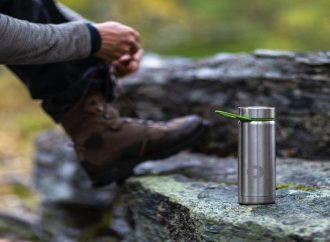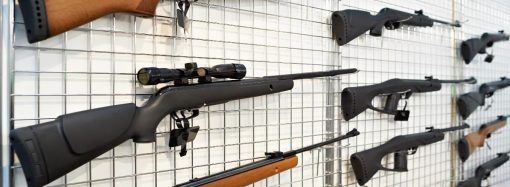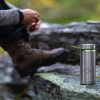When facing a disaster situation, there’s a wealth of food options available to preppers looking to get their sustenance.
When facing a disaster situation, there’s a wealth of food options available to preppers looking to get their sustenance.
From frozen foods to canned goods and freeze-dried alternatives, you’re spoilt for choice – and depending on your situation (like whether you’re bugging in or out) each option suits each prepper differently.
One popular choice is MREs for preppers – they’re used by the armed forces who are considered ‘the professionals’ when it comes to SHTF scenarios. However, these organisations have millions of pounds behind them, but you simply need to work within your budget.
In this article we’ll take a closer look at MREs so you can decide if it’s the right option for you with this list of pros, cons, and further information.
What Are MREs?
In short, MRE stands for ‘meal ready to eat’. They have origins dating back to before the First World War, and each soldier was issued a ration suitable for their location.
For example, those based in colder areas were given food with high thermogenetic qualities, as the slow metabolic rate kept them warmer for longer.
Those staying in hotter climates, like North Africa, were given food that was quick to digest, as a heavier meal can lead to sluggishness and prove harder to handle when moving around in more challenging climates.
Preppers who’re bugging out are more likely to need a stockpile of MREs than their bugging in counterparts, due to limited storage options and lower carry weights, however those bugging in can still have lots of these as a backup.
You can even buy certain MRE meals in packs to last a month, or choose a 24 hour MRE meal kit – an excellent option to have in a hidden survival cache! Some places even sell individual MREs which are meant for day campers or those completing Duke of Edinburgh awards.

Pro – Shelf Life
MREs have a long shelf life, and findings by the US Army’s Natick Research Laboratories show that meals stored at 15°C provide the most enduring longevity, one that’s around six years. This proves ideal for preppers bugging out, as this is a fairly common temperature for the UK.
It’s also easy to attain with proper insulation, like wrapping meals in clothes that aren’t being worn. Ideally, the lower the temperature, the better – but once it hits freezing (common for a winter spent bugging out) the food can face issues of spoiling.
In addition to the longevity, six years is a long time – so you can stock up, but don’t need to go overboard as you have a long timeframe in which to find your later meals. You can even supplement your very own survival garden with MREs due to their longevity.
MREs for preppers are therefore a great choice if you are planning on a long-lasting SHTF crisis which may last months or year, for example a civil or global war, or a financial collapse which has a knock on effect to the food supply.
Con – Storage
With freeze-dried goods, the removal of water leads to shrinkage, allowing more products in a smaller space.
Canned goods come in a universal size, so you can plan ahead for how much to take, but with MREs, the size of each individual package is dependent on its content, creating a need for more space than normal – especially if every biscuit is wrapped individually.
This can prove inconvenient for preppers looking to support themselves far into the future, or who have a small amount of space they need to take complete advantage of.
If your MRE pouch gets damaged as you’ve stored it incorrectly, it needs to be thrown out as it will become contaminated with bacteria and oxidisation will begin to take place.
This means they’re not the best option for carrying in a rucksack bug out bag for weeks on end, jostling around with everything else in there and potentially getting ripped.
As mentioned above, it’s important to keep them at the right temperature. In the winter, or if you’re spending time up north, around Cumbria and up into Scotland, you must be considerate of the temperature so they don’t spoil.
This is easy to prepare for – simply buy something like a cool box – but that doesn’t mean it’s convenient, especially to bug out on foot with. For a bug in situation, it’s a great idea and can be filled with MREs and stashed away.
Pro – Ready to Go
As the name suggests, MREs for preppers are ready instantly. Although they are designed to be consumed after heating with water, like ramen noodles or something you might have in your day to day life, you won’t be ill if you do have to eat it directly from the package.
As you know, water is scarce in a survival situation, even for the UK’s best prepper – so these are a great option when you’re facing an unknown SHTF situation. Even if you do have to face a known disaster, you can do a lot worse than these.
Many MREs you can buy come with flameless heaters, where the food acts as a self-heating object by applying a few simple steps. These can be bought from a huge number of online retailers, offering a variety of flavours to accommodate every palette.
Con – Price
As shown above, flameless heater meals are a great way to get sustenance without compromising on flavour, but one thing you’ll also notice is the high price tag.
MREs can cost anywhere from a couple of quid each to around £60 for a pack of 12, or even more.
This is a fee that simply isn’t accessible for the vast majority of the UK’s preppers, especially if you have a family of four or more to feed 3 times a day.
There are additional factors that come into play when considering the MRE price for preppers, including which type of meal you purchase and the size. Some can be bought at 400 calories, of which you will need at least 3-4 per day, or you can opt for 2 x 1000 calorie MRE packs.
With options available including military-grade packs, humanitarian daily rations and bulk buys, this does help lower the price a bit, but it will never be in the same ballpark as canned goods and other variations.
The price is due to the technology, packaging, and high level of convenience – we see this in the cost of freeze-dried foods, but there is still a large gap between MREs and their alternatives.
Pro – Calories
The history of MREs is grounded in the armed forces – and although they have a budget millions of times that of the average prepper, efficiency is still key, which is why each MRE is packed with calories.
The average MRE for preppers in the UK contains 1000 – 1500 calories, essentially half the average adult’s daily intake. Two of those and you’re covered in the normal world.
In a disaster situation, you’ll have to compromise, so one MRE and something else like a tin of food will sort you out until the next day.
There’s also a huge variety of MREs for preppers to choose from, like curries and pastas, breakfast foods and even desserts. Although not that important, you are prepping, which means you can get ready in advance and choose dishes you enjoy.
Summary
MREs have perhaps a longer list of pros and cons than alternative prepper meals, as they’re more complex and go further on both ends of the negative and positive scale. Ultimately, there are a few key factors including storage, price, and convenience.
If you’re unsure of your situation when SHTF, we recommend a different approach – but if you know exactly what you’ll be dealing with, they’re certainly worth considering
Even having a box of 24 MRE meal packets at the back of your cupboard as backup preps is a good option – they’re convenient, nutritious, only need to be heated up, and won’t go out of date any time soon.





















